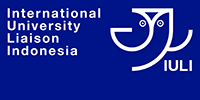Abstract : Phycocyanin is a pigment-protein complex synthesized by blue-green microalgae such as Arthrospira (Spirulina) platensis. This pigment is used mainly as natural colouring in food industry. Previous studies have demonstrated the potential health benefits of this natural pigment. The price of phycocyanin is a vital factor that dictates its marketability. The cost of culturing the algae, particularly from the substrate used for growth, is one of the main factors that determine the price of phycocyanin. Another important factor is the growth yield of the algae. In our research, agricultural waste such as charcoal produced from rice husk was utilized for the algae cultivation to replace the synthetic chemicals such as urea and triple superphosphate used the mineral medium. The use of this low cost substrate increases the cell concentration by 60 % during 8 days cultivation to reach 0.39 g/l. The phycocyanin extraction was performed using water at the different biomass-to-solvent ratio and shaking rates. The phycocyanin concentration and purity (A615 /A280) obtained were 1.2 g/l and 0.3. These values are 40 % and 20 % lower than the value obtained from the algae produced using the synthetic chemicals. Further purification produced the extract purity required for food grade. The biomass-solvent ratio does not significantly affect the extract purity; however the higher shaking rate during extraction reduces the purity. This finding demonstrates the potential of using rice husk as an alternative substrate to cultivate algae for phycocyanin extraction.
Keywords: phycocyanin; Spirulina, Arthrospira platensis; agricultural waste; extraction.
(Accepted) Proceedings of the 29 Symposium of Malaysian Chemical Engineers (SOMChE) 2016 – (December 1 – 3, 2016)
